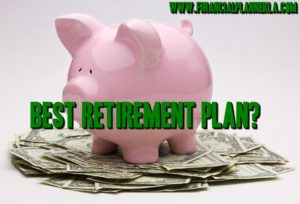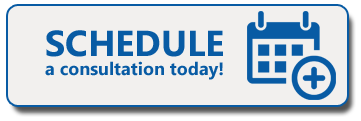
How to choose the best small business retirement plan account? The best plan for you will depend on how much you want to save or how much you need to lower your tax bill. Business owners like you are so busy running your business the last thing you want to think about it setting up a retirement account or saving money. The right plan (and contributions) can set you up for more financial success and save you a ton on taxes.
By David Rae Certified Financial Planner™, Accredited Investment Fiduciary™
Speaking to retirement planning being a pain in the booty. 34 percent of entrepreneurs don’t currently have any retirement savings plan at all, according to a new survey by Manta, an online community for small businesses.
Whether you are a super saver or just getting started it is important to pick the retirement account for your business. Even if you love what you do and never plan to retire a retirement plan can help you slash your tax bills today. At the very least you can plan for financial independence- the day at which work becomes an option. Or maybe you have a little more ease only taking on ideal clients.
You should strive to save between 10% and 20% of your income towards retirement. That may sound impossible to many of you, the important thing is to get started. So, I’m going to lay out the Goldie Locks three options for small/medium and large savers.
Best Small Business Retirement Plan – Small Saver – Putting away less than $5500
If you are saving less than $5500 per year you can keep things simple and just use a Traditional IRA or a ROTH IRA. For more on the differences between these two retirement accounts check out this post: What you need to know about Every type of Retirement Account NOW.
Best Small Business Retirement Plan Medium Saver- $5500 to $55,000.
If you are able to save in this range, you should consider a SEP IRA or Solo 401k plan. Both of these plans will allow you to stash away more money in a tax-favored manner than a ROTH or Traditional IRA. Which plan is best for you will depend on a combination of how much you make and how much you want to save.
SEP IRA– This is the easier of the two accounts to set up and maintain. You may not be able to put as much money away into this type of account depending on your income. Your allowable contribution is based on your income. Generally, you can put away 25% of your adjusted gross income (after deductions, including your SEP contributions). So this plan may not be great for big savers with smaller (net) incomes.
SEP for Procrastinators– A big advantage for a SEP IRA is you can set it up and fund it for the prior year. For example- you get surprised with a big tax bill. You potentially have until October to set up and fund a SEP IRA. A 401(k) plan would have to be set up the prior year.
Solo 401k- You can potentially put away $19,000 as an employee of the business. Additional profit sharing contributions can take the total up to $56,000 of allowed tax-deductible contributions. More if you are over 50. Solo 401(K) are also better for business partners. As you have more flexibility to each contribute what is right for you.
For more on Solo 401k Plans read: How to slash your tax bill with a Solo 401(K)
Best Small Business Retirement Plan Large Saver- $55,000 or More:
Looking to save more than $55,000 per year? Check out the Defined Benefit Pension Plan combined with a Solo 401(K). Take the benefits of a Solo 401k as described above and add a personal pension plan to the mix.
This is a program structured for small business owners or self-employed and high earners. That is, those with just a few employees or who work as sole proprietors – generally around their 50’s, who want to reduce their tax bills will be socking away large amounts of money for retirement or maybe just to achieve financial independence. The Defined Benefit Pension Plan is specifically for those who earn high enough incomes and can afford to put much more away than is allowed with just a 401(K) plan. Participants can deduct their contributions, resulting in large tax deferrals, while creating their own “personal” pensions. Much like the pension plans our parents or grandparents enjoyed, these will guarantee a set monthly payment in retirement through the rest of your life. For more information check out our post Is the Cash Balance Plan Your Key to Catching Up for Retirement?
Personal Defined Benefit Plan
Contributions are mostly based on a combination of your age and income. The younger you are, the less you can contribute. The reason being that if you are younger, the money saved will have more time to grow. As the name implies we are contributing to provide a Defined Benefit at a specific time in the future. I’ve helped set up plans where my clients were able to contribute north of $200,000 per year for themselves. (Saving them over $100,000 in taxes by the way) This is potentially above and beyond what you can put into a 401(k) profit sharing plan. You can do this too. In fact, to maximize potential contributions and to lower your tax bill in the current year, as well as tax deferral for the savings. Your Fiduciary Financial Planner will be able to structure these two plans together for you.
Cost of Retirement Calculator
Is your financial plan going to get you where you want to go? #FinancialFreedom

Live for Today, Plan for Tomorrow. Your business will thank you for it.
DAVID RAE, CFP®, AIF® is a Los Angeles-based retirement planning specialist with DRM Wealth Management. He has been helping small business owners reach their financial freedom for over a decade. He is a regular contributor to the Advocate Magazine, Investopedia and Huffington Post as well as the author of the Financial Planner Los Angeles Blog. Follow him on Facebook, or via his website www.davidraefp.com
Is The Defined Benefit Plan The Best Way For Business Owners To Minimize Taxes?
Is The Defined Benefit Plan The Best Way For Business Owners To Minimize Taxes?










[…] joining the ranks of the entrepreneurial class, the responsibility to set up a retirement plan for your small business falls squarely on you. Entrepreneurs are busy and saving for retirement is likely not on the top of […]
[…] joining the ranks of the entrepreneurial class, the responsibility to set up a retirement plan for your small business falls squarely on you. Entrepreneurs are busy and saving for retirement is likely not on the top of […]
[…] For years the SEP IRA has been the go-to easy retirement account for the self-employed to save for the future and cut their tax bills in one place. 401(K) plans were mostly for large corporations with the budget to run a retirement plan. I’m here to tell you that times have changed. The Solo 401(k) also known as an Indy K or Individual 401(k), is the new king of self-employed retirement plans. […]
[…] For years the SEP IRA has been the go-to easy retirement account for the self-employed to save for the future and cut their tax bills in one place. 401(K) plans were mostly for large corporations with the budget to run a retirement plan. I’m here to tell you that times have changed. The Solo 401(k) also known as an Indy K or Individual 401(k), is the new king of self-employed retirement plans. […]
[…] For years the SEP IRA has been the go-to easy retirement account for the self-employed to save for the future and cut their tax bills in one place. 401(K) plans were mostly for large corporations with the budget to run a retirement plan. I’m here to tell you that times have changed. The Solo 401(k) also known as an Indy K or Individual 401(k), is the new king of self-employed retirement plans. […]
[…] For years the SEP IRA has been the go-to easy retirement account for the self-employed to save for the future and cut their tax bills in one place. 401(K) plans were mostly for large corporations with the budget to run a retirement plan. I’m here to tell you that times have changed. The Solo 401(k) also known as an Indy K or Individual 401(k), is the new king of self-employed retirement plans. […]
[…] For years the SEP IRA has been the go-to easy retirement account for the self-employed to save for the future and cut their tax bills in one place. 401(K) plans were mostly for large corporations with the budget to run a retirement plan. I’m here to tell you that times have changed. The Solo 401(k) also known as an Indy K or Individual 401(k), is the new king of self-employed retirement plans. […]
[…] For years the SEP IRA has been the go-to easy retirement account for the self-employed to save for the future and cut their tax bills in one place. 401(K) plans were mostly for large corporations with the budget to run a retirement plan. I’m here to tell you that times have changed. The Solo 401(k) also known as an Indy K or Individual 401(k), is the new king of self-employed retirement plans. […]
[…] the most successful business owners, the typical 401(k) will leave them paying way too much in taxes. We’ve had a wave of success […]